The week at a glance
- Common Yellowthroat still in Gwent
- Siberian Stonechat in County Wexford
- Black-bellied Dipper again in West Yorkshire
- Spanish Sparrow and Dark-eyed Junco still in Hampshire
- Northern Waterthrush still on Scilly
- British Iceland Gull record again broken in the Outer Hebrides
- Small arrival of Sand Martins and other migrants
Early March is one of those short periods of the birding year where a distinctive lull tends to occur: the exodus of wintering species to climes further north and east is well underway, while the first of our familiar summer migrants are yet to make widespread arrival. This year is proving no exception, with an almost sleepy feel to proceedings in what proved a colder and more unsettled first week of March. Nevertheless, the first Sand Martins managed to dribble into southern areas, and one or two quality rarities were (re‑)found.
South Wales continued to host the star of the show: the Common Yellowthroat was still at Rhiwderin (Gwent) to 5th, although it was not reported with the regularity of the past couple of weeks. Whether such elusiveness is genuine or merely due to reduced observer coverage is difficult to assess, although the latter has no doubt played a part. The Northern Waterthrush was also noted once more at Lower Moors, St. Mary's (Scilly) on 7th.
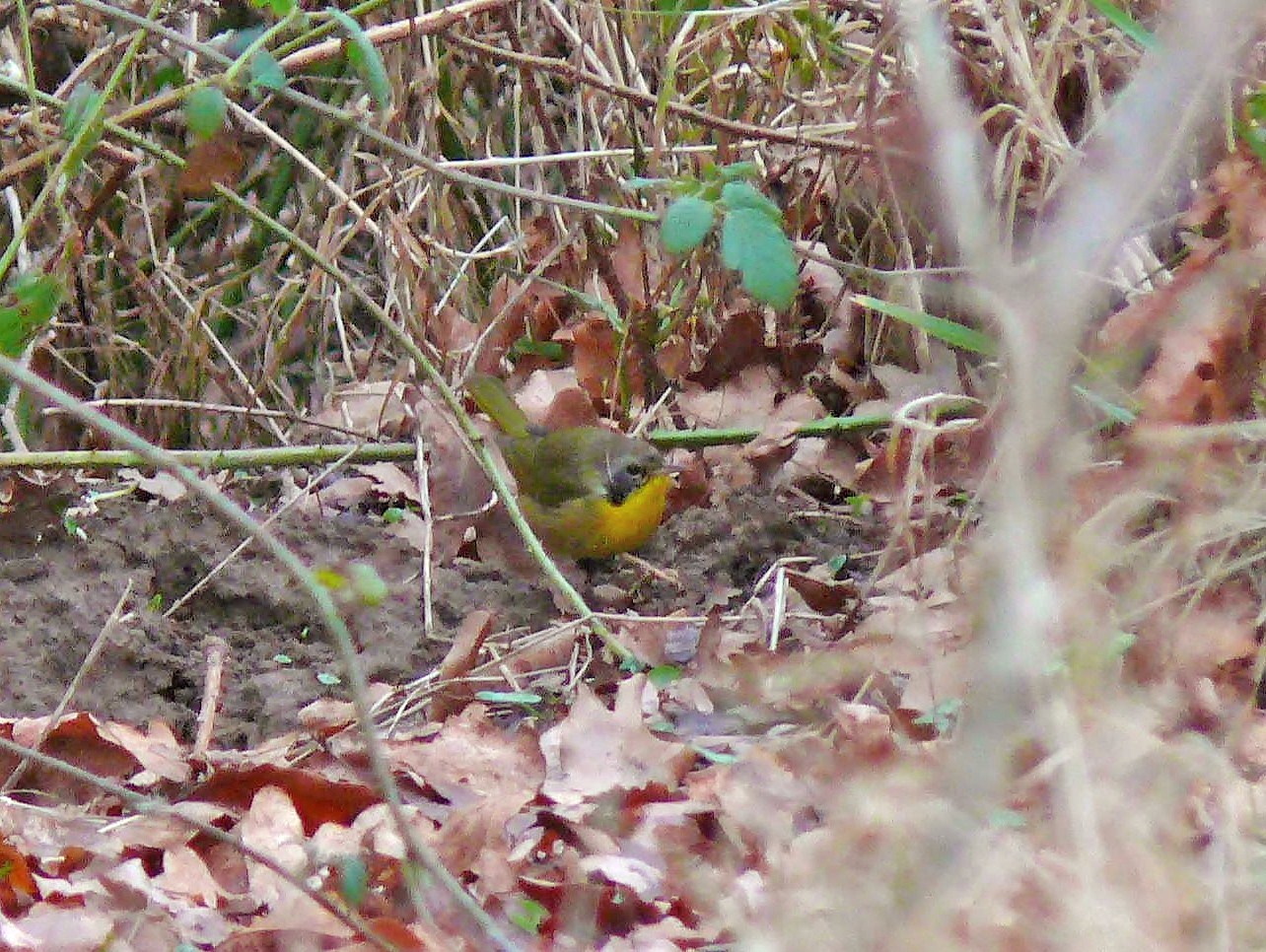
Common Yellowthroat, Rhiwderin, Gwent (Photo: Kris Gibb)
Rather predictably, Hampshire's 'big two' remained in residence: the Spanish Sparrow was still in Calshot all week, and was also heard singing on occasion. Just down the road, the Dark-eyed Junco remained at Hawkhill Inclosure throughout. Joining the heavyweights was a male Rose-coloured Starling at nearby Hordle, initially reported on 2nd but present since at least 29th February. As with the sparrow, hormones were evidently kicking in, for it was also singing regularly.

Spanish Sparrow, Calshot, Hampshire (Photo: Tony Hovell)
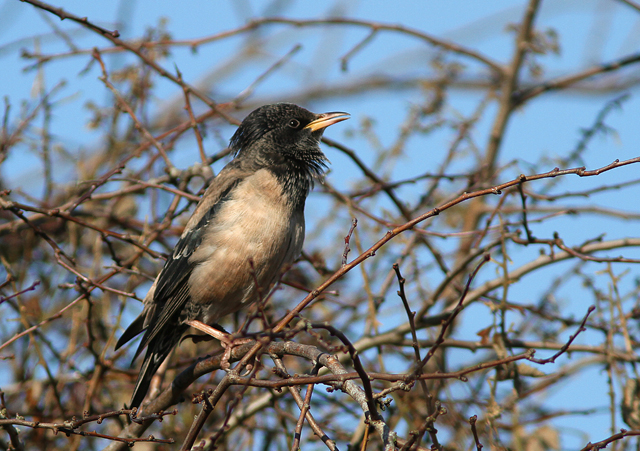
Rose-coloured Starling, Hordle, Hampshire (Photo: Steven Lane)
A white-morph Snow Goose flew over the Myroe Levels (L'derry) on 2nd and another was with Greylag Geese near Douglas Water (Clyde) on 7th, while the blue morph was again at Lower Lough MacNean (Fermanagh) on 7th. Three were also still in Lancashire. The Dumfries Ross's Goose relocated to Mersehead on 6th although, for once, there were no reports from Norfolk. Also in Dumfries was the Red-breasted Goose, still with Barnacles at Southerness Point to 6th. The Suffolk bird remained at Kirton Creek and Falkenham Marshes on 3rd–4th, with the Hampshire bird at Needs Ore Point on 3rd–5th before it disappeared once more — next stop Sussex?

Snow Goose, Aldcliffe Marshes, Lancashire (Photo: Janet)
A good scattering of Richardson's Canada Geese included three still at Ballygilgan Nature Reserve (Sligo) on 1st, with another again at Malin Head (Donegal) on 3rd. Islay (Argyll) birds remained at Loch Gruinart and Bridgend, while the usual adult was still at Torr Reservoir throughout the week. The probable first-winter Grey-bellied Brant was still at Killough Nature Reserve (Down) to 3rd only, with Black Brants again at Fethard-on-Sea (Wexford) on 1st, Dengie Marshes (Essex) on 4th and Trimley Marshes (Suffolk) on 6th.
Marlingford (Norfolk) claimed a new drake American Wigeon this week, reported on the water meadows there from 1st but apparently also present several days earlier. It lingered to 7th at least, with a Great White Egret also in the vicinity. Other American Wigeon remained at Bay of Suckquoy (Orkney) to 4th, and Kirk Loch (Dumf & Gall), Angler's Country Park (W Yorks) and Exminster Marshes (Devon) throughout.

American Wigeon, Exminster Marshes RSPB, Devon (Photo: Ian Seward)
New Green-winged Teal were at Coole Park (Galway) and Lough Beg (Antrim) on 4th, Drayton Bassett Pits (Staffs) on 7th, and RSPB Saltholme (Cleveland) — the first site record — on 3rd–6th. The drake at Maldon (Essex) was still present throughout; there is some debate over whether the off-white horizontal stripe on the lower scapulars hint at Teal genes being involved, but then again it could merely be intraspecific variation. Others remained at Kinneil Lagoon (Forth), Loch of Kinnordy (Angus & Dundee), Mersehead (Dumf & Gall), East Chevington (Northumberland) and Tacumshin (Wexford). The drake Blue-winged Teal also remained on St. Mary's (Scilly).
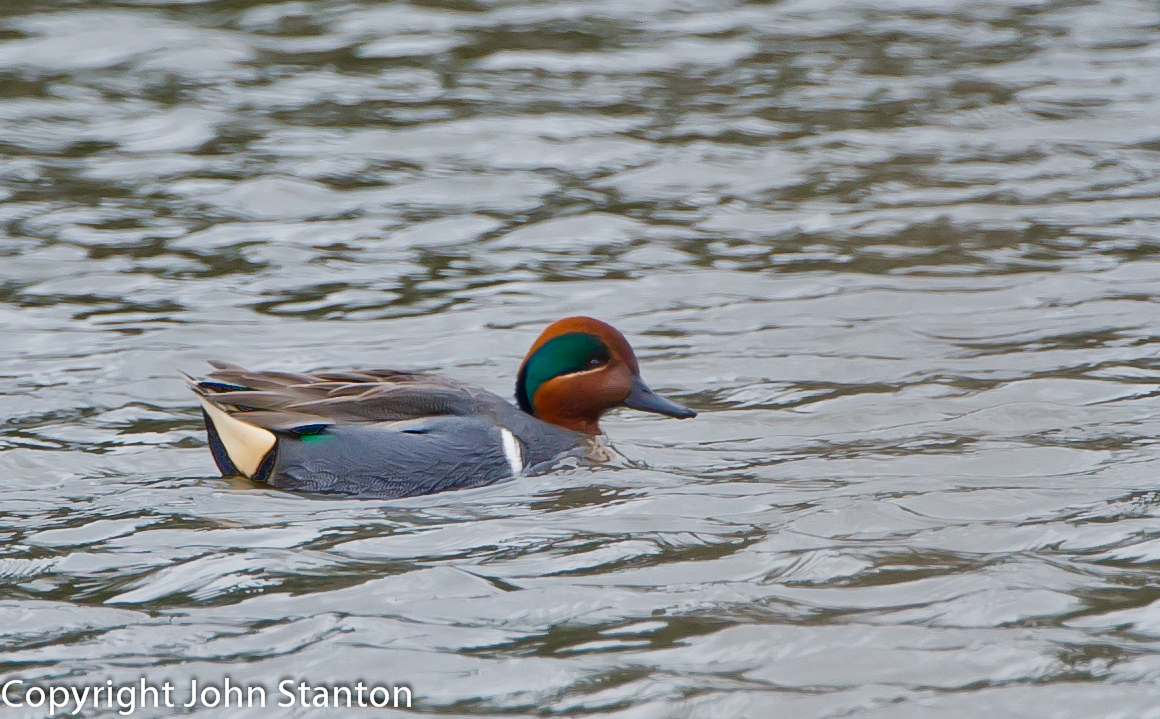
Green-winged Teal, Maldon, Essex (Photo: John Stanton)
Down in Cornwall, the Bufflehead was still at Helston Loe Pool (Cornwall) to 4th when it relocated to a small pool northeast of Stithians Reservoir for one evening only. There have been no reports since; perhaps it has finally headed northwards? Many optimistic listers will be hoping the female Hooded Merganser in Kent soon does something similar: however, it was still happily floating around Whetsted Gravel Pits to 6th at least.

Hooded Merganser, Whetsted GPs, Kent (Photo: Josh Jones)
It seems that last week's burst of spring-like weather did indeed cause a considerable shake-up in Aythya concentrations. A reduced incidence of Lesser Scaup reports involved just two birds: the lingering drake at Cosmeston Lakes (Glamorgan) to 3rd, and the female again at Slimbridge (Glos) on 5th. In addition, far fewer Ring-necked Ducks were reported: the Hebridean female relocated to Loch Fada, Benbecula on 7th, and drakes were still in residence at Par Beach Pool (Cornwall) and Fleetwood (Lancs) to 4th, and Trabboch (Ayrshire) to 7th.

Ring-necked Duck, Trabboch, Ayrshire (Photo: Dennis Morrison)
A first-winter female King Eider off Annagh Head for 30 minutes on 1st (before it flew north, never to be seen again) was an excellent find. It mirrors the occurrence of a young drake in the exact same bay in December 2008 — an impressive double given the rarity of the species in west Ireland and, for that reason, the romantics among us may like to suggest that this is the Kerry bird of late 2011 relocating northwards. More routine was the reappearance of the adult drake off Burghead on 1st.
Three drake Surf Scoters remained off Llanddulas (Conwy) on 3rd, with the female also still off Morfa Nefyn (Gwynedd) to 5th. A new drake popped up at the most predictable of sites — Ruddon's Point (Fife) — on 1st, and spent the following few days floating around Largo Bay. First-winter drakes were still off Garretstown (Cork) to 5th and Mount's Bay (Cornwall) to 7th although, for once, there was no news on the Devon bird.
The only Cattle Egret report of the week concerned one at Brading (IoW) on 5th, although Great White Egrets remained steady at around twenty birds. Three were at Dungeness (Kent) on 3rd, with two also in the county at Seaton Gravel Pits the same day. An Irish record came from Enniscorthy (Wexford) on 6th. In Lincolnshire, the White Stork continued to frequent Kirkby-on-Bain's landfill site until 3rd at least.
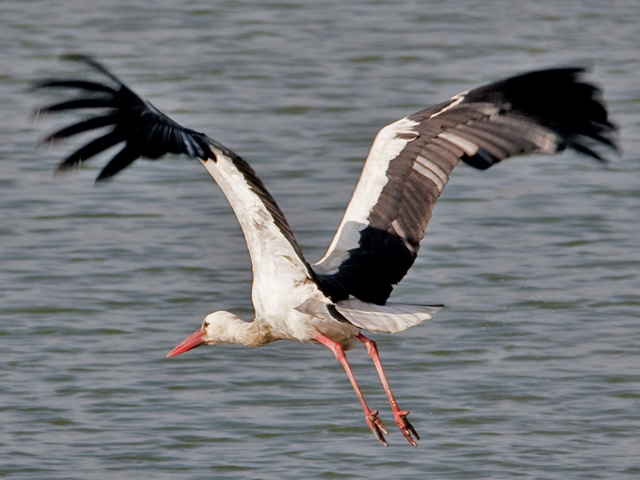
White Stork, Kirkby on Bain GPs, Lincolnshire (Photo: Trevor Gunby)
A Glossy Ibis at Broom Gravel Pits (Beds) briefly on 6th would have been huge for local birders had it lingered. However, given the species' meteoric rise in frequency combined with a wealth of recent records from nearby Cambridgeshire, it may not be long before the wait for a twitchable bird is ended. Up to four were still touring Burgh Castle and Halvergate and Berney Marshes throughout the week; one was still just down the coast at Eastbridge (Suffolk) to 6th and another at Heybridge Basin (Essex) on 7th. Three were still in the Marloes (Pembrokeshire) area to 5th, and one flew over Valley Lakes (Anglesey) on 2nd. Two were still proving elusive at Radipole Lake (Dorset), while the week's set of records were completed by remaining singletons in the Shapwick (Somerset) area and at Leighton Moss (Lancs).
Over in Galway, the Pallid Harrier was again seen roosting at Lough Corrib on 3rd. After a record year in 2011, it will be interesting to see how many (if any) spring records occur. Two Rough-legged Buzzards were at Elmley Marshes (Kent) on 3rd, although Holkham (Norfolk) could only muster a single bird this week. The Northern Irish bird remained at Chapel Island (Down), with other birds seen in West Sussex, Suffolk, Lincolnshire, East and South Yorkshire, Durham and Shetland.
As predicted, the Pectoral Sandpiper was still in Ayrshire: it was again at Dundonald Camp on 3rd–7th, while another was reported from Loch Gruinart, Islay (Argyll) on the latter date. Spotted Sandpipers remained at Stanpit Marsh (Dorset) to 4th and Chew Valley Lake (Somerset) throughout.

Spotted Sandpiper, Stanpit Marsh, Dorset (Photo: Mike Trew)
The long-staying Greater Yellowlegs seems to have ants in its pants. A lack of further reports from Highland was seemingly explained by the bird's reappearance at Loch of Strathbeg (Aberdeenshire), where it was seen briefly in flight only on 3rd — place your bets on an imminent reappearance in Northumberland please. In contrast, the Lesser Yellowlegs at Kingsmill Lake (Cornwall) appears an altogether more chilled-out customer, lingering all week and rapidly approaching its 100th day at the site. Two Long-billed Dowitchers continued to tour a series of Wexford sites throughout the week, while singletons were again at Lodmoor (Dorset) on 5th and Wigtown (Dumf & Gall) on 7th; the latter has not been seen since January. Finally, a Stone Curlew spent an afternoon on Seaton Marshes (Devon) on 3rd.
A first-winter Bonaparte's Gull seen flying north past Newbiggin-by-the-Sea (Northumberland) on 5th frustratingly did not linger, and the adult again put in a few appearances at Cardiff Bay (Glamorgan) on 3rd–5th. More reliable was the adult still at Ballygalley (Antrim) on 3rd. Given the variation of its European counterpart and the rather unlikely location, a possible second-winter American Herring Gull reported in the roost at Queen Mary Reservoir (Surrey) on 3rd will no doubt remain that way.

Bonaparte's Gull, Cardiff Bay, Glamorgan (Photo: Richard Smith)
For the second week running, the British Iceland Gull record was broken in Stornoway Harbour, Lewis (Outer Hebrides): an outstanding 81 birds were noted on 3rd. How many times will this be bettered before birds start to disperse in a few weeks' time? Sixty Icelands in Lerwick Harbour (Shetland) on 7th included at least five Kumlien's Gulls, while six were among 45 Icelands at Killybegs (Donegal) on 4th. In contrast, there were no large counts received from Orkney, for the first time for many weeks. Glaucous Gull numbers dwindled nationwide: the peak count was of six at Killybegs on 4th.

Adult Kumlien's and second-winter Iceland Gulls, Lerwick, Mainland, Shetland (Photo: Dougie Preston)

Glaucous Gull, Peel, Isle of Man (Photo: B Callow)
A reduction in Ring-billed Gull numbers saw only around 15 reported. Up to three were still in the Blennerville (Kerry) area throughout the week, with a new bird also in the county on the Cashen Estuary on 1st. Others were still in Sligo, Galway, Limerick, Cork, Waterford and Dublin. A new first-winter was on the Hayle Estuary (Cornwall) on 6th, with the Scottish bird still at Barassie (Ayrshire). Adults also remained at Seaforth (Lancs) and Gosport (Hants).

Ring-billed Gull, Nimmo's Pier, Galway (Photo: Tom Cuffe)
The confirmation of a possible Richard's Pipit along the North Wall at Pagham Harbour (W Sussex) on 3rd never came, although there was more positive news of the continued presence of the Killard Point (Down) individual the day before. Much more exciting was a newly arrived Siberian Stonechat at South Slob (Wexford) from 5th; given the recent split of this taxon from European Stonechat, there will probably be considerably more interest in future records.

Siberian Stonechat, South Slob, Wexford (Harry Hussey).
A Black-bellied Dipper along the River Aire in Shipley (W Yorks) on 6th–7th is not a new bird: it was noted here on several dates in October 2011 although it proved rather mobile and elusive. Even so, how it has managed to evade further detection (or at least the public eye) for over four months is remarkable!
The first flush of migrants managed to trickle into southern areas during the week. Sand Martins were the most widespread, with scattered records as far north as Cumbria including seven in Salford (Gtr Manchester) on 2nd and four at Pugney's Country Park (W Yorks) on 4th. A Swallow flew through at St. Leonard's on Sea (E Sussex) on 1st, with another near Clonakilty (Cork) on 3rd. Just a couple of Wheatear records were received, from Exminster Marshes (Devon) on 5th and Portland (Dorset) on 7th.
With milder weather conditions now predominating, the Paddyfield Warbler at Pagham Harbour (W Sussex) is proving a much more cooperative beast. It was still present to 6th, taking to regular bouts of flycatching from the tops of Phragmites and, in the mild early spring sunshine, even giving short bursts of song.
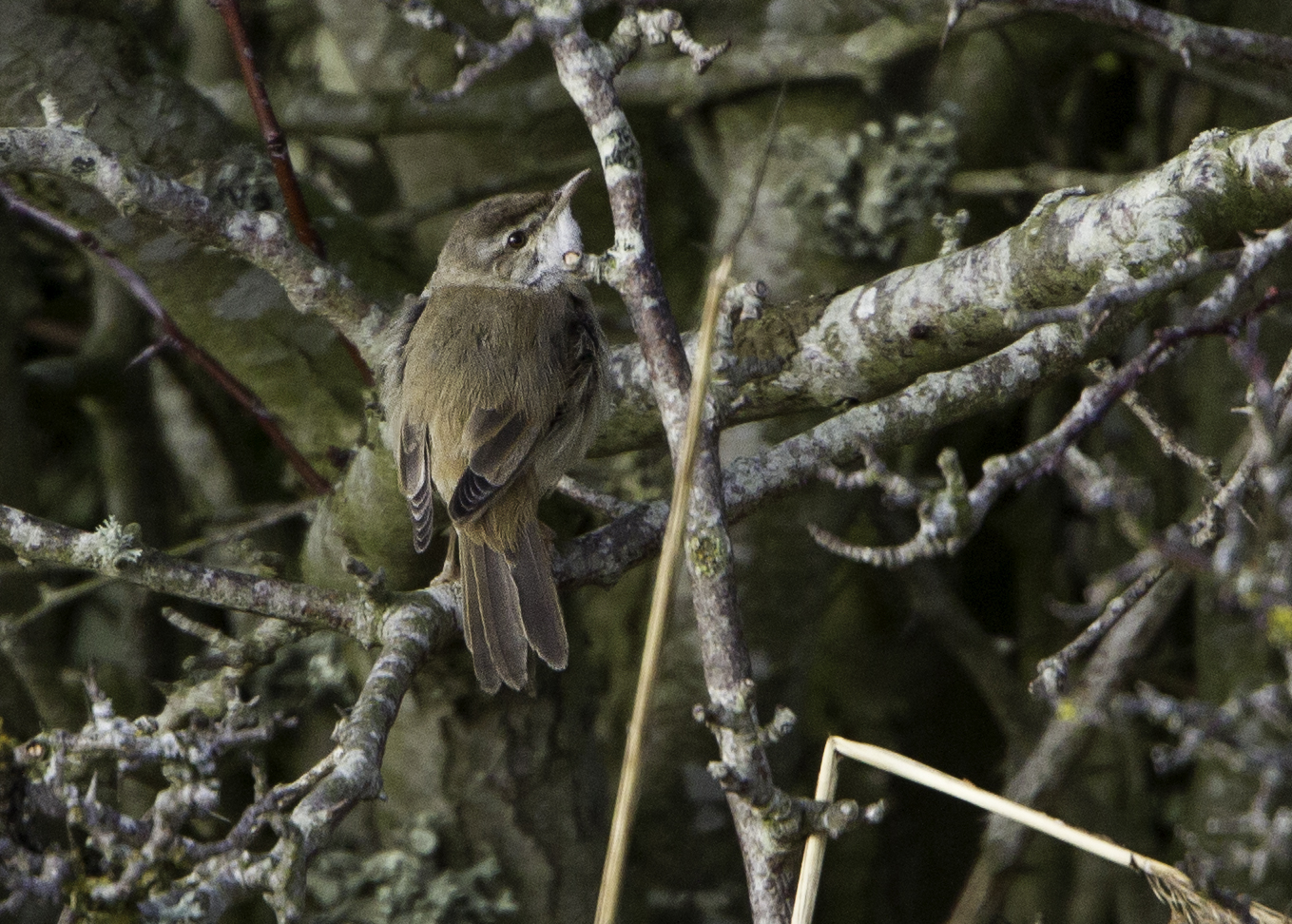
Paddyfield Warbler, Pagham Harbour LNR, West Sussex (Photo: Bill Brooks)
After a lack of reports for around three months, a Yellow-browed Warbler was again noted at Carminowe, Lizard (Cornwall) on 2nd–5th, with another belatedly reported in the county at Marazion from 29th February. Further records from the Southwest came from Carnon Downs (Cornwall), Exmouth (Devon) and Combe St. Nicholas (Somerset), with the popular bird also still showing well in a Worthing (W Sussex) car park to 6th. There were also several Siberian Chiffchaffs at similar locations, while a Dartford Warbler at Far Arnside (Cumbria) on 6th was a monster county bird — unfortunately, there was no sign the following day.

Yellow-browed Warbler, Carminowe, Lizard, Cornwall (Photo: Steve Bury)
In addition to the Hampshire individual, Rose-coloured Starlings remained in gardens in Holyhead (Anglesey) to 4th and Muirhead (Ayrshire) to 7th. After a barren few years for wintering 'Rosy Pastors', it makes a refreshing change to have multiple gettable individuals so early in the year.

Rose-coloured Starling, Muirhead, Ayrshire (Photo: Kris Gibb)
At least 27 Great Grey Shrikes were noted, and included several new birds. Four Scottish records included a new individual at Kirkhill (Highland) on 5th, with another at Powmill (Perth & Kinross) on 4th presumed to be the same individual present at Cleish earlier in the year. Wales claimed five individuals: a new record from Lake Vyrnwy (Powys) joined birds still at World's End (Clwyd), Cross Inn Forest (Ceredigion), Llwyn-on Reservoir (Glamorgan) and Ty-Rhyg (Pembrokeshire). As is typical, the majority of records stemmed from England and included two at Wyke Down (Dorset) on 1st.

Great Grey Shrike, Layham Pits, Suffolk (Photo: Chris Upson)
In Kent, the ringed male Penduline Tit was still at Dungeness on 1st but not again, while in Norfolk the first-winter Coues's Arctic Redpoll continued to entertain visitors to Titchwell throughout.
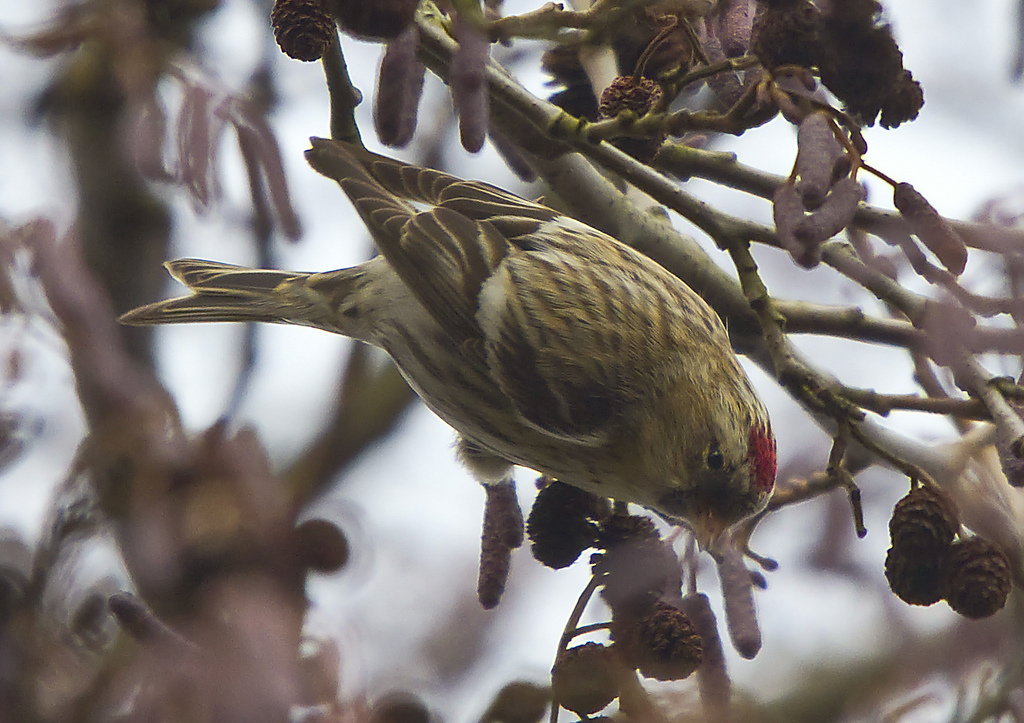
Coues' Arctic Redpoll, Titchwell RSPB, Norfolk (Photo: Peter Wood)
So, a considerably quieter week passes and, with one of the most exciting periods of the ornithological year on the horizon, many birders are now looking to the weeks ahead. However, with recent finds in the Low Countries including Wallcreeper and Little Bustard, perhaps an eleventh-hour winter mega could make an appearance in the British Isles.
Photo of the Week: 1st–7th March

Great Crested Grebe, Yarrow Valley CP, Lancashire (Photo: David Cookson)
After the long winter months of northern latitudes, the early signs of spring are now all around. As birds start revving up once again to the mating game, bird photographers get equally excited about the prospect of new photo opportunities and longer, lighter days in which to tackle them. The celebrated courtship display of the Great Crested Grebe is one such opportunity and has been captured intimately by bird photographer David Cookson. With a near-black backdrop of shaded vegetation reflecting off the water contrasting with the white sunlit breasts and cheeks of the birds, David creates the perfect monochrome canvas on which to bring out the colourful focal point of the near-touching faces. After the obvious attraction to the glowing red eyes and rich chestnut plumes, the eye can appreciate the more delicate pinks of the crossed bills and the way they complete the heart-shape formed by the head and neck lines. One to get us all in the mood for a new breeding season!
Other notable photos

Sparrowhawk, Kirkcudbright, Dumfries & Galloway (Photo: Alan McFadyen)

Barn Owl, undisclosed site, Suffolk (Photo: Chris Darby)

Glaucous Gull, Peel, Isle of Man (Photo: B Callow)

Short-eared Owl, undisclosed site, Lancashire (Photo: Austin Thomas)

Jay, Chippenham, Wiltshire (Photo: Pete Blanchard)

Common Kestrel, undisclosed site, North Yorkshire (Photo: Mark)

Southern Carmine Bee-eater, South Africa (Photo: Sean Johnston)

Wallcreeper, Spain (Photo: John Sutherland)

Ptarmigan, Cairn Gorm, Highland (Photo: John Fielding)

Golden Plover, undisclosed site, Highland (Photo: Artur Stankiewicz)

Goldcrest, Upper Hollesley Common, Suffolk (Photo: John Richardson)

Snow Bunting, Doonfoot, Ayrshire (Photo: Chas Moonie)
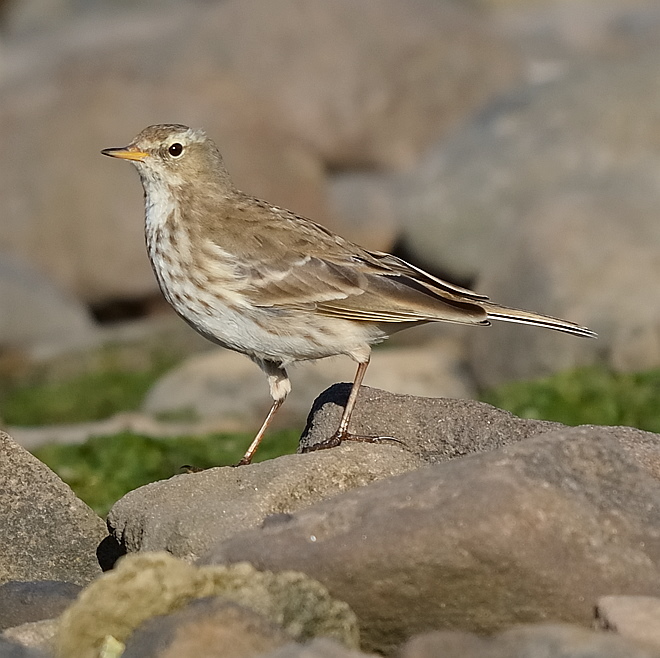
Water Pipit, Barns Ness, Lothian (Photo: Mike Thrower)

Lesser Redpoll, Warnham LNR, West Sussex (Photo: Sandra Palme)

Long-tailed Duck, Rhuddlan, Clwyd (Photo: Steve Round)

Lapland Bunting, Bardsey Island, Gwynedd (Photo: Ben Porter (aged 15))


